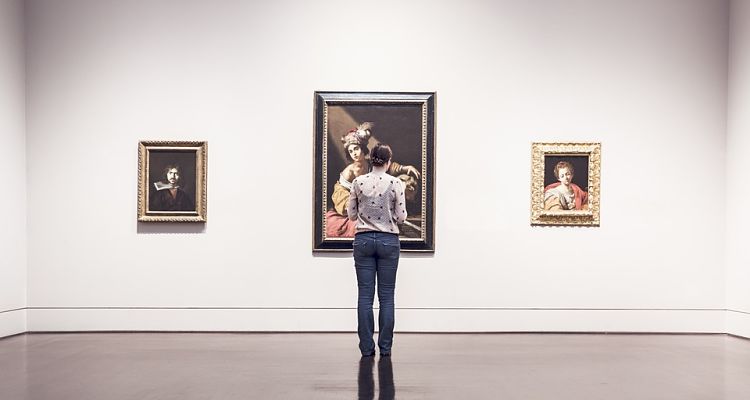
Your art and antiques are probably the most valuable items in your home. That’s why you should take specific precautions to keep your items protected, especially on moving days. Given the investment you’ve made as an art and antique collector, you should know that moving these items is a complex task. That’s why most people employ the services of a professional art and antique mover.
You need to keep your valuable items safe when you move them to a new home or gallery.
You need to keep your valuable items safe when you move them to a new home or gallery. The best methods and techniques for packing and transporting artwork and antiques are covered in this guide, along with advice on how to choose the best supplies, packing strategies, and means of transportation. Whether you are an experienced collector or a first-time mover, this guide will provide you with the information and confidence to protect your priceless possessions throughout each step of the moving process.
What is Considered Valuable Art and Antique?
A professional appraiser is often needed to assist in the complicated process of determining the value of art or antique furniture. When packing for a move, there are several fundamental rules you may stick to in order to recognize items that might be valuable and merit special consideration.
First, consider the item’s age and rarity. In general, an item’s value increases with age, particularly if it is uncommon or has historical significance. Look for distinctive characteristics or indications that can point to the item’s age or place of origin, such as a signature, a date, or a design that is connected to a certain historical moment or artist.
To determine an item’s market value, look for comparable products. Online marketplaces, auction websites, and antique shops can all offer valuable insight into recent sales prices of comparable goods. Remember that an item’s condition can significantly affect its value, so make sure to account for any damage or wear and tear when determining its worth.
Finally, take into account any accompanying paperwork or history. Keep any certificates of authenticity, appraisals, or other records that attest to the origin, significance, or worth of the object with it during the move.
Expert Tips for Handling Art and Antiques
So, you’ve got a collection of art and antiques that you’re proud of, right? Imagine the unthinkable happens during your move—your cherished painting gets a tear or that antique vase shatters. You’d be devastated. But don’t worry, we’ve got some pro tips that even the experts swear by. These aren’t your run-of-the-mill suggestions; these are game-changers.
1. The White Glove Test
Ever heard of the white glove service? It’s not just for show. Experts recommend wearing white cotton gloves when handling art and antiques. Why? Oils and dirt from your hands can degrade materials over time. So, next time you think about lifting that oil painting, remember the gloves.
2. The 45-Degree Rule
When lifting framed art, especially with glass, tilt it at a 45-degree angle. This reduces the pressure on the glass and minimizes the risk of it breaking. It’s a small detail, but one that can save you a lot of heartache.
3. Climate-Controlled Transport
You’ve probably heard about climate-controlled storage, but what about transport? Some specialized moving companies offer climate-controlled trucks. If you’re dealing with sensitive materials like oil paintings or antique wood, this is a must. Temperature swings can cause materials to expand and contract, leading to damage.
4. The ‘Sandwich’ Technique
For those fragile, flat items like paintings or antique mirrors, consider the sandwich technique. Place a flat piece of cardboard or plywood smaller than the item on both the front and back, and then wrap it. This provides an extra layer of protection during the move.
5. The Appraiser’s Insight
Before you even think about packing, get an updated appraisal of your items. Not only does this give you an idea of your collection’s current market value, but it also helps in case you need to make an insurance claim later.
6. The ‘No Stack’ Rule
Never, and we mean never, stack your art or antiques, even if they’re wrapped or boxed. Always transport them standing up, secured in place. Stacking can lead to pressure damage that might not be visible immediately but can show up later.
7. The Unveiling
Once you’ve moved, don’t just rip off the protective materials. Carefully unwrap each item, inspecting it as you go. If you notice any damage, contact your insurance company immediately.
8. The Post-Move Care
After the move, give your items some time to ‘acclimate’ before placing them in their final spots, especially if they’ve been in a different climate. This helps to prevent any potential damage due to sudden changes in temperature or humidity.
Packing Art and Antiques For a Move
The ordinary packaging just won’t do in this case, no matter how much you reinforce your boxes with extra tape. Rather, these items call for heavy-duty materials such as cushiony-type materials along with sizeable crates.
But even before you get to the packaging stage, you need to first talk to a professional art and antique appraiser so that they can put a value on your property, especially if you are using a local moving company that does not necessarily specialize in moves such as this.
Find a few big, sturdy picture boxes that are large enough to contain your paintings and framed prints. We suggest utilizing the original boxes the things came in if you have kept them. The boxes typically come in two parts that are attached to create one long box. They ought to be able to fit major works of art better. If the piece of art is exceptionally huge, we advise selecting a crate that is the right size to hold it.
Inventory Your Items Before the Move
You are also advised to take photographs of your art and antiques just in case something happens en route to your destination. Whether you choose a professional art and antique mover or not, you still need to have your items packaged in customized crates that are designed to keep your items stable while they fit snugly in the crate. Your prized possessions are reinforced with cushioning pads which are thick but are also flexible enough to be wrapped around the item.
Get Your Art and Antiques Insured
It’s crucial to obtain insurance protection for your artwork when moving. Having insurance can give you peace of mind and protect your investment because accidents can happen no matter how careful you or your movers are. Finding insurance should be easy if you have your inventory list and updated appraisals on hand.
First, check if your moving company offers insurance for artwork. Although many movers do provide insurance, you should carefully check the coverage and limits to make sure your artwork is completely protected. It can be necessary to work with a third-party insurer to obtain additional coverage if your collection has a high rate of appraisal. Make sure to shop around, compare prices, and choose the coverage plan that best suits your needs.
Artwork and Antiques are Sensitive to Heat and Cold
The sensitivity of artwork and antiques to heat and cold should be taken into account when moving or storing them. Extreme temperatures can distort, break, or otherwise deteriorate these delicate and frequently irreplaceable goods, resulting in serious damage.
There are various measures you can take to preserve your artwork and antiques while they are being transported or stored. Use a climate-controlled facility to start, like a temperature-controlled storage unit or a specially equipped truck with climate control. Keep your belongings in a stable environment, this will help to maintain the temperature and humidity levels.
Additionally, it’s crucial to keep your antiques and artwork out of the sun and significant temperature changes. Pack carefully to protect them from impact during transit. Some appropriate materials to use are padded moving blankets, bubble wrap, and specially-made crates.
Get Ready To Move Your Fine Art
Moving experts would tell you that moving items like these are better not explored as a do-it-yourself project. You would be putting your items at risk for damage, especially if you attempt to package the items by yourself.
However, if you must move your own art and antiques, there is definitely a method involved to ensure that you get them carefully to the moving vehicle after they are wrapped professionally.
Mirrors and Framed Paintings
Mirrors and framed paintings are especially prone to nicks and scratches when being moved. Corner protectors, such as those made of cardboard or styrofoam, should be used to encircle these components because of this.
To avoid scratches to the surface of your antiques, they should be lifted and never dragged, especially if they are heavy furniture. And if you have antique chairs, it is advised that you lift them from under their seats and not arms. Be prepared to disassemble your antique tables and later wrap the legs and the top portion of the table.
Be cautious when placing your artwork in the moving truck; make sure it won’t be crushed or damaged by heavy furniture or large boxes.
If you do not wish for the hassle of disassembling the table then you should not lift the table by its top or even the legs but by its apron which would make it easier for you and your helpers to get from your house to the moving truck for moving.
Unloading and Unpacking
It’s just as crucial to pack and load art and antiques as it is to unpack and unload them. It’s crucial to take your time and handle each item with care when unpacking and unloading your belongings to prevent damage.
It’s a good idea to get help when you’re unpacking or unloading, especially if you have a lot of large or heavy items. Consider asking the assistance of friends or relatives who are able to lift and handle delicate objects, or look into hiring movers with experience moving art and antiques.
Carefully remove each item from its packaging, then look for any damage. As soon as you become aware of any damage, make a note of it and get in touch with your moving company or insurance provider to submit a claim.
Consider Art Movers
A professional art moving company may be worth considering if you have priceless artwork and antiques that need particular handling throughout the move. Art movers have the knowledge and tools necessary to ensure that your belongings are protected during the relocation, and are experts in the careful handling and transportation of delicate and priceless antiques.
The peace of mind and safety you receive from working with an expert might make the extra cost of hiring an art moving company more than worthwhile. You can make sure that your priceless antiques and works of art are transported with the highest care and attention by giving them to professionals in the field and guaranteeing that they will arrive at their destination in the same condition as when they left.
Mistakes to Avoid When Moving Fine Art and Antiques
1. Ignoring Material-Specific Needs
Different materials require different care. For example, oil paintings and watercolors can’t be treated the same way. Oil paintings are more resilient to temperature changes, while watercolors are extremely sensitive to moisture. Always research the specific needs of each material in your collection and plan accordingly.
2. Ignoring the “Vibration Factor”
Roads aren’t always smooth, and vibrations can travel through the packaging, causing micro-abrasions or loosening secured parts over time. Counter this by using anti-vibration mounts or materials in your packaging.
3. Using Newsprint for Packing
Sure, newspapers are readily available and might seem like a good packing material. However, the ink can easily transfer onto your art or antiques, causing irreversible damage. Always opt for acid-free packing paper or materials specifically designed for art and antiques.
4. Overlooking the Importance of Positioning During Transit
You’ve wrapped your items, but have you thought about how they’ll sit in the moving vehicle? The position matters. For example, placing a heavy item on top of a fragile one is a recipe for disaster. Always consider the weight distribution and secure items to prevent shifting during the move.
5. Not Labeling the “Top” and “Front” on Wrapped Items
It might seem obvious to you which side is the front or top when you’re packing, but what about when you’re unpacking? Incorrectly orienting an item when you’re unwrapping it can lead to unnecessary handling and potential damage. Always label the “top” and “front” clearly on the wrapping.
6. Skipping the Pre-Move Condition Report
Before you start packing, document the current condition of each item. This isn’t just for insurance purposes; it’s also for your peace of mind. If something does go wrong, you’ll have a clear record to compare against, making it easier to assess any new damage.
7. Forgetting About Post-Move Acclimation
You’ve successfully moved your items, but the job isn’t done yet. Different climates can affect materials differently. For example, wood can crack if it’s moved from a humid environment to a dry one too quickly. Allow your items to acclimate to the new environment before unwrapping them.
Hidden Challenges in Moving Fine Art and Antiques
Mixed-Media Artworks: Artworks that incorporate various materials like metal, fabric, and paint can be especially tricky to move. Different materials react differently to temperature and humidity, making it a challenge to find a one-size-fits-all solution for packing and transport.
Solution: Consult with a conservator who specializes in mixed-media art. They can provide tailored advice on how to pack and move these complex pieces. For instance, they might recommend separating the materials if possible and packing them in different climate-controlled environments.
The “Last Mile” Problem: The final leg of the journey, often from the moving truck to the display location, is fraught with risks. This phase is usually less controlled, and the artwork is exposed to a variety of potential hazards like bumps, scrapes, and even theft.
Solution: Use a specialized art handling service for the last mile. These services use trained personnel and specialized equipment to ensure that your art and antiques are handled with the utmost care during this critical phase.
Assembling Large Installations: Some art pieces are large installations that need to be disassembled for the move and reassembled at the new location. The complexity of these pieces can make it difficult to put them back together correctly, risking damage.
Solution: Document the disassembly process meticulously. Use high-resolution photographs and detailed notes to record each step. Hire or consult with the artist or a professional experienced in assembling such installations to ensure it’s done correctly.
The “Documentation Gap” Issue: Often, people focus on the physical aspects of moving art and antiques and overlook the importance of proper documentation. This can be a problem if you need to prove provenance or file an insurance claim later.
Solution: Create a digital “moving portfolio” for each item. This should include high-resolution photos from multiple angles, certificates of authenticity, appraisals, and any other relevant documents. Store this portfolio in a secure cloud service.
The Challenge of Non-Standard Shapes: Art and antiques often come in non-standard shapes, which can make them difficult to pack securely. Standard boxes and packing materials may not provide adequate protection.
Solution: Invest in custom-built crates or boxes designed to fit the unique dimensions of your art or antiques. These custom solutions often incorporate shock-absorbing materials that can provide additional protection during the move.
In summary, moving your art and antiques requires careful planning to ensure their safe transportation. You can preserve the condition and worth of your possessions during each stage of the moving process by adopting best practices and techniques when packing, handling, and transporting them. Follow our moving tips to ensure that your items are protected during a move.
Ultimately, investing in proper care during the move can keep your valuable items safe and give you peace of mind. If you take the time to carefully plan and carry out your relocation, it can make all the difference in the world, whether you are moving to a new house or need to have them in storage.




As an appraiser with 30 years experience in assessing moving damage claims, I can tell you that your advice is right on the money. If there are valuable art and antiques to be moved, hire a company that specializes in these items and investigate them thoroughly before hiring them to do the move. Also, I don’t recommend moving valuable items oneself. Movers are not responsible for damage to items in boxes that are packed by owner (PBO).
Thanks for your input Wayne. It is appreciated. Perhaps you can share some more of your expertise with us in an upcoming article. It would be nice to do an indepth feature on this. Let me know if you will be up for an interview on this to make this article happen. Thanks again.